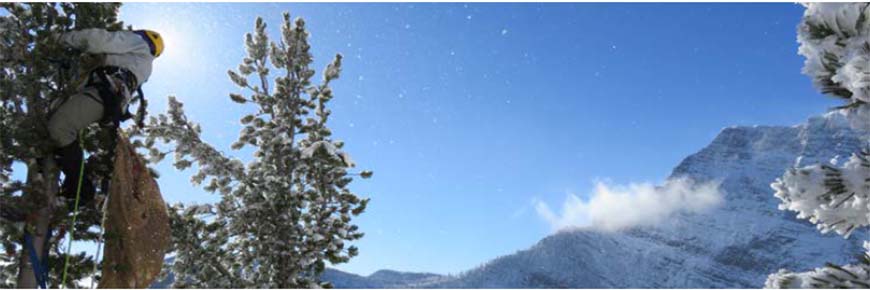
Overview
Parks Canada’s Conservation and Restoration (CoRe) projects are as varied as the 33 national parks, national historic sites and national marine conservation areas in which they occur. The diverse projects we report on here run the gamut from restoring forests to re-establishing eel grass; from recovering threatened whales to saving endangered plants; from reducing over-abundant moose to decreasing plentiful urchins; from mitigating invasive species threats to alleviating problems caused by roads. Different contexts, different ecosystems, different communities – and different collaborators.
Despite the ways in which CoRe projects differ from one and other, they also have much in common. CoRe projects are organized according to a set of methodological standards. They are designed to identify problems, collaborate with others, invest in solutions and realize achievements in a common manner. By following practical approaches to conservation and restoration, CoRe projects succeed in ways that engage and benefit society.
What’s the issue?
Parks Canada identifies CoRe project problems in two ways. First, in national parks we monitor ecological integrity – that is, an ecosystem’s ability to maintain itself – by measuring ecosystem change, with the degree of change reflecting good, fair or poor ecological integrity. CoRe projects typically prioritize restoration actions for ecosystems that are in poor or fair condition. Second, CoRe projects treat species-at-risk issues. These are typically identified in action plans published by the Government of Canada on the Species at Risk Public Registry. The action plans point to activities needed to protect and recover the species (e.g. increase population size, improve habitat), and so about one third of CoRe projects focus on those types of issues.
What’s our approach?
To improve integration, communication and effectiveness among projects, CoRe promotes the use
of consistent terminology and a standard approach to conservation planning and implementation
– guidelines collectively known as the Open Standards for the Practice of Conservation. The
Open Standards aim to remedy common weaknesses of conservation and restoration plans by
applying a simple, transparent adaptive-management framework that improves team unity, project
conceptualization, long-term efficiency and the assessment of conservation outcomes. A key
expectation for CoRe projects is that they’re efficient, engaging and effective – principles espoused by
Parks Canada and our partnersFootnote 1. Their success is also based on evidence. CoRe projects define
What’s been accomplished?
Summarized in this report are over 40 CoRe projects currently underway or recently finished. The diversity of conservation issues, approaches and accomplishments across the country is evident. Thirty-four percent of projects are recovering species at risk. Forty-one percent are managing invasive species. Prescribed, or controlled, fire is used in 29 percent of projects to restore species and ecosystems. Fifty-one percent involve transplanting or translocating species back into our protected heritage areas.
About half of all projects are collaborations with Indigenous communities or partners, providing invaluable contributions to their success. All projects engage stakeholders, partners, visitors or Canadians in a range of virtual or in-person experiences. Innovating, learning and adapting to sometimes relatively new conservation issues, project leaders have been able to achieve a national goal of meeting at least 60 percent of ecological targets – a success that will only continue to improve as we gain more experience in restoration.
As you read through the following project snapshots, our hope is that you learn something new about the challenges species and ecosystems face in protected heritage areas, what Parks Canada has done or is continuing to do to remedy these problems, and what we have learned or achieved along the way.
- Date modified :